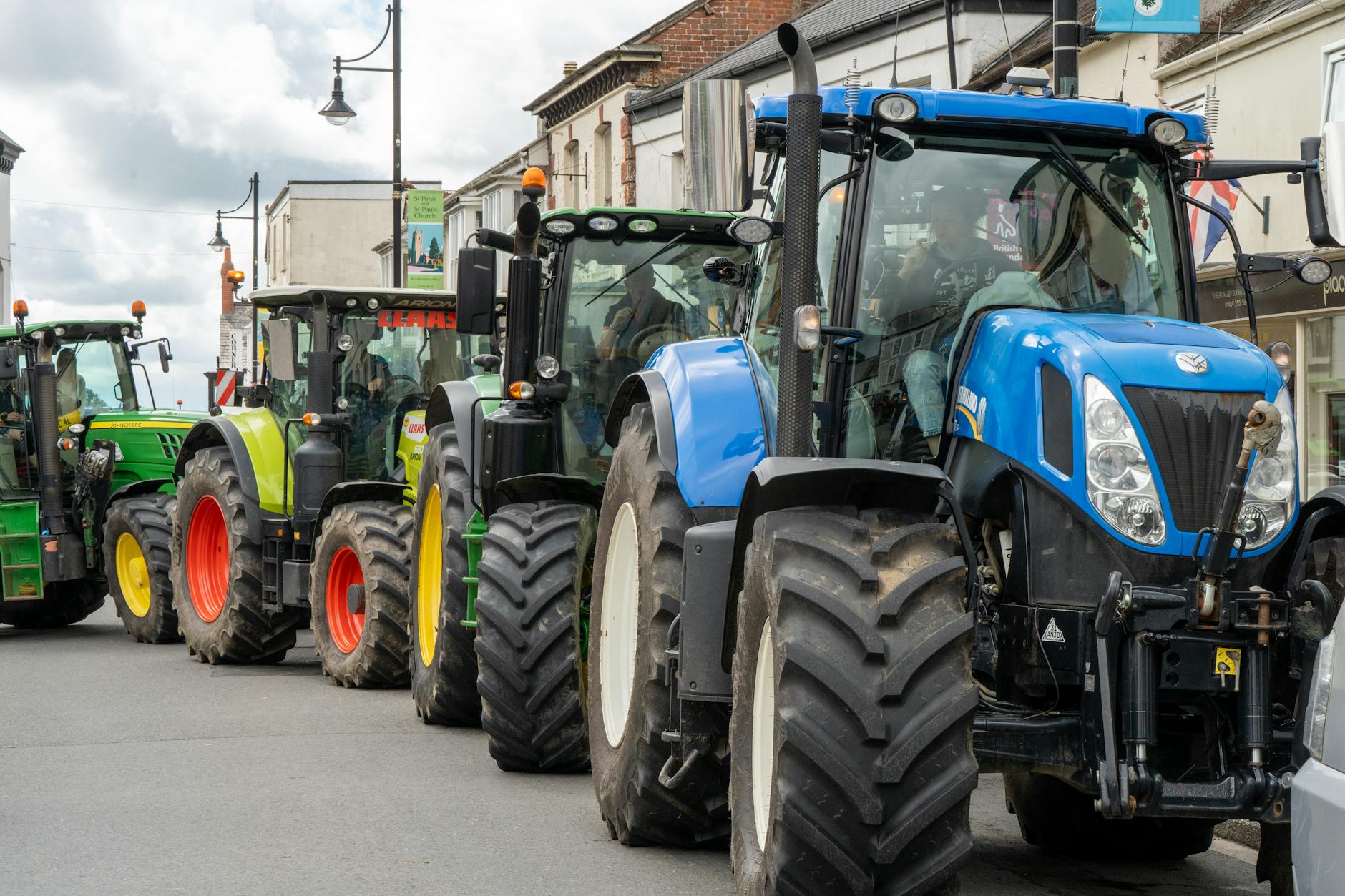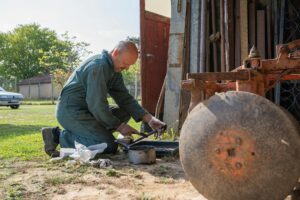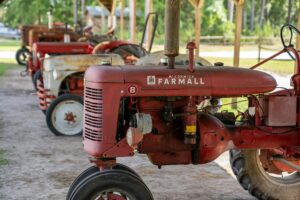If you’ve ever seen a tractor up close, you’ve likely noticed one striking feature—big wheels! Tractors, whether used for farming, construction, or landscaping, almost always have large rear tires that dwarf the front wheels. But why is that?
In this detailed guide, we’ll explore the reasons behind tractors’ big wheels, their impact on performance and efficiency, and how they help farmers tackle some of the toughest agricultural challenges.
Why Do Tractors Have Big Wheels?
The large rear wheels on tractors aren’t just for show. They serve multiple functional and scientific purposes, including:
- Better Traction and Grip on Soil
- Increased Ground Clearance
- Weight Distribution and Stability
- Reduced Soil Compaction
- Improved Fuel Efficiency
- Mechanical Advantage and Torque Distribution
Let’s break each of these down in detail.
1. Better Traction and Grip on Soil
One of the main reasons tractors have big wheels is to increase traction. Farming involves working on soft, uneven, and sometimes muddy surfaces, where regular tires would slip and lose efficiency.
🔹 How Big Wheels Improve Traction:
- Larger tires spread the tractor’s weight over a bigger surface area, preventing it from sinking into the soil.
- The deep treads on tractor tires provide grip and stability, helping the machine move through wet, sandy, or muddy terrain without getting stuck.
- Better traction means less power is lost, making the tractor more fuel-efficient.
Think of it like wearing snowshoes on deep snow—bigger surface areas prevent you from sinking, just as large wheels keep tractors from getting stuck in soft soil.
2. Increased Ground Clearance
Farmers often work on rough, uneven fields with rocks, stumps, and furrows from previous planting seasons. Tractors need higher ground clearance to move smoothly across such landscapes.
🔹 Benefits of Big Wheels for Ground Clearance:
- Helps prevent damage to crops when working in the field.
- Avoids getting stuck on rocks, furrows, and obstacles.
- Allows for deeper plowing without interference from the tractor’s undercarriage.
Higher ground clearance makes it easier for tractors to navigate rough terrain while ensuring efficient farm operations.
3. Weight Distribution and Stability
A tractor’s weight needs to be balanced properly to avoid tipping over during heavy-duty operations like plowing, tilling, and hauling. The large rear wheels play a crucial role in stabilizing the machine.
🔹 How Big Wheels Help with Stability:
- Tractors carry heavy loads (plows, trailers, seeders, etc.), and larger wheels help spread the weight evenly.
- The lower center of gravity prevents tipping, especially on uneven terrain or slopes.
- A wider wheelbase ensures better balance when pulling or pushing farm equipment.
This weight distribution is essential for safety, particularly when working on hilly or sloped landscapes.
4. Reduced Soil Compaction
One of the biggest concerns in farming is soil compaction, which occurs when heavy machinery presses the soil too tightly, reducing its ability to absorb water, nutrients, and oxygen.
🔹 How Big Wheels Reduce Soil Compaction:
- The larger surface area of big wheels distributes the tractor’s weight more evenly, preventing deep ruts and compacted soil.
- Less soil compaction means better root growth for crops and higher yields at harvest time.
- Modern tractors use wide, low-pressure tires that further minimize soil damage.
Without large tires, tractor weight would create deep, compacted tracks that harm plant roots and reduce overall farm productivity.
5. Improved Fuel Efficiency
Farmers rely on tractors to cover large areas daily, making fuel efficiency a key factor in farming operations. Believe it or not, big wheels help tractors use less fuel.
🔹 Why Large Wheels Improve Fuel Economy:
- Larger tires reduce rolling resistance, meaning the tractor requires less energy to move forward.
- Less slipping means more efficient power transfer, so the engine doesn’t have to work as hard.
- A well-balanced tractor with optimal traction prevents wasted fuel on unnecessary corrections or rework.
This is why many farmers opt for larger tires to improve performance while lowering operational costs.
6. Mechanical Advantage and Torque Distribution
Tractors are designed to generate immense pulling power, and their big wheels play a direct role in torque distribution.
🔹 How Big Wheels Improve Torque:
- A larger rear wheel creates a mechanical advantage, allowing the tractor to pull heavy loads more efficiently.
- The increased diameter of the tire means that each rotation covers more ground, reducing engine strain.
- Since tractors rely on low-speed, high-torque operation, bigger wheels help maximize torque output without excessive fuel consumption.
In simple terms, bigger wheels allow tractors to work smarter, not harder.
Why Are Tractor Front Wheels Smaller Than Rear Wheels?
If large wheels offer so many benefits, why don’t tractors have big wheels on both the front and back?
The answer lies in maneuverability and steering control.
🔹 Smaller front wheels help with: ✔️ Easier steering – Allows the tractor to turn sharply, especially in tight spaces. ✔️ Weight balance – The rear wheels bear most of the weight, while front wheels help with guidance. ✔️ Cost efficiency – Bigger wheels are more expensive; keeping front wheels smaller helps reduce overall manufacturing costs.
This front-small, rear-big design is known as the “differential tire size concept,” which helps tractors remain stable, powerful, and efficient in agricultural work.
Conclusion: The Science Behind Big Tractor Wheels
So, why do tractors have big wheels? It’s all about functionality, efficiency, and performance.
✅ They provide better traction on loose, uneven, and muddy ground. ✅ They increase ground clearance to handle obstacles in the field. ✅ They distribute weight evenly to prevent tipping and ensure safety. ✅ They reduce soil compaction, promoting better crop growth. ✅ They improve fuel efficiency, lowering costs for farmers. ✅ They maximize torque and pulling power, making them ideal for heavy farm work.
Tractors aren’t just built for power—they’re designed with careful engineering and science to meet the unique demands of agriculture. The next time you see a tractor with massive wheels, you’ll know exactly why they’re so important! 🚜💨
Would you like to learn more about different types of tractor tires and how to choose the best ones for farming? Let me know in the comments! 🚜



